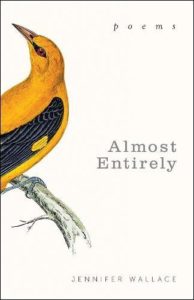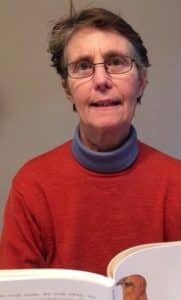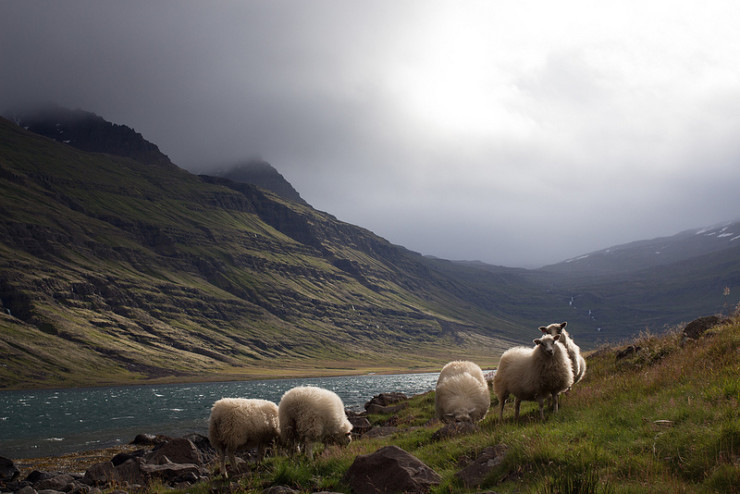The 1981 movie Chariots of Fire includes a scene of the Scottish runner Eric Liddell talking to a group of spectators after a race. Liddell asks a rhetorical question about faith, and running and winning a race: “Where does the power come from?” And he answers it by saying, “The power comes from within.”
That scene kept playing through my mind as I read the new poetry collection Almost Entirely by Jennifer Wallace. The collection’s 74 poems are about faith in the context of being human and living a human life, and looking within to find what can sustain and grow. As much as we might try, we know that life is not those Facebook happy face emojis. But neither is it the sad face. It is both, sometimes at the same time.
What Wallace does is to look deeply at what makes us human, and what is within us that keeps reaching for the divine. She examines our doubts, our questions, our need for forgiveness, our place in the natural world, and our place in the world constructed by humanity. She pays special attention to the wrongs we commit—several of the poems are about recording these wrongs in various ways and then offering them up as burned incense or propitiation or pushing them away for good.
Here is one example of how several of these themes play through her poems.
Prayer

lined with grass and moss. In it I’ll wrap
the troubles of the ones I love
and all the wrongs I’ve done.
On a night when the full moon’s gentle light
frosts a path offshore,
I’ll give the boat a little shove, hope
it won’t capsize on the shoals.
Off you go, mild vessel,
be steadfast in the wind,
Your cargo needs a resting place.
Lord, keep it safe amidst the rock and dorsal fins.

Jennifer Wallace
She is figuratively sending off her troubles and the wrongs she’s committed, trusting that her “boat of mud and wattle” will not capsize, with the troubles and wrongs coming back as so much flotsam and jetsam on the shore. Instead, she is trusting in a promise that they will find a resting place. It’s significant that she entitles this poem “Prayer,” for that is indeed what her boat truly is.
Wallace, a poetry editor at The Cortland Review, has published two poetry chapbooks, Minor Heaven (2005) and It Can Be Solved by Walking (2012), and a collection, The Want Fire (2015). She was also a contributor to Desire Path and several other works. She is also an essayist and photographer, and her works has been published in numerous literary and art publications.
The 73 poems of Almost Entirely are quiet statements of the everyday human experience, the experience that incorporates faith in something other than ourselves.
Photo by Vincent, Creative Commons, via Flickr. Post by Glynn Young, author of the novels Dancing Priest, and A Light Shining, and the newly published Dancing King, and Poetry at Work.
__________________________

“I require all our incoming poetry students—in the MFA I direct—to buy and read this book.”
—Jeanetta Calhoun Mish
- Longfellow’s “Paul Revere’s Ride”: Creating a National Legend - April 17, 2025
- Poets and Poems: Katie Kalisz and “Flu Season” - April 15, 2025
- Poets and Poems: Michelle Ortega and “When You Ask Me, Why Paris?” - April 10, 2025

Roy A Ackerman, PhD, EA says
Looks like this will be sought out at my library. Thanks for the share.
Marilyn Yocum says
I’ll be looking into this one.
Sandra Heska King says
Me, too. (Me, three.) And would you believe I’ve never watched Chariots of Fire? At least all the way through. I’ve attempted a couple of times, but fell asleep. Next time, I’ll start it earlier in the day.
Lane Arnold says
An enticing review…eager to read the poems within.